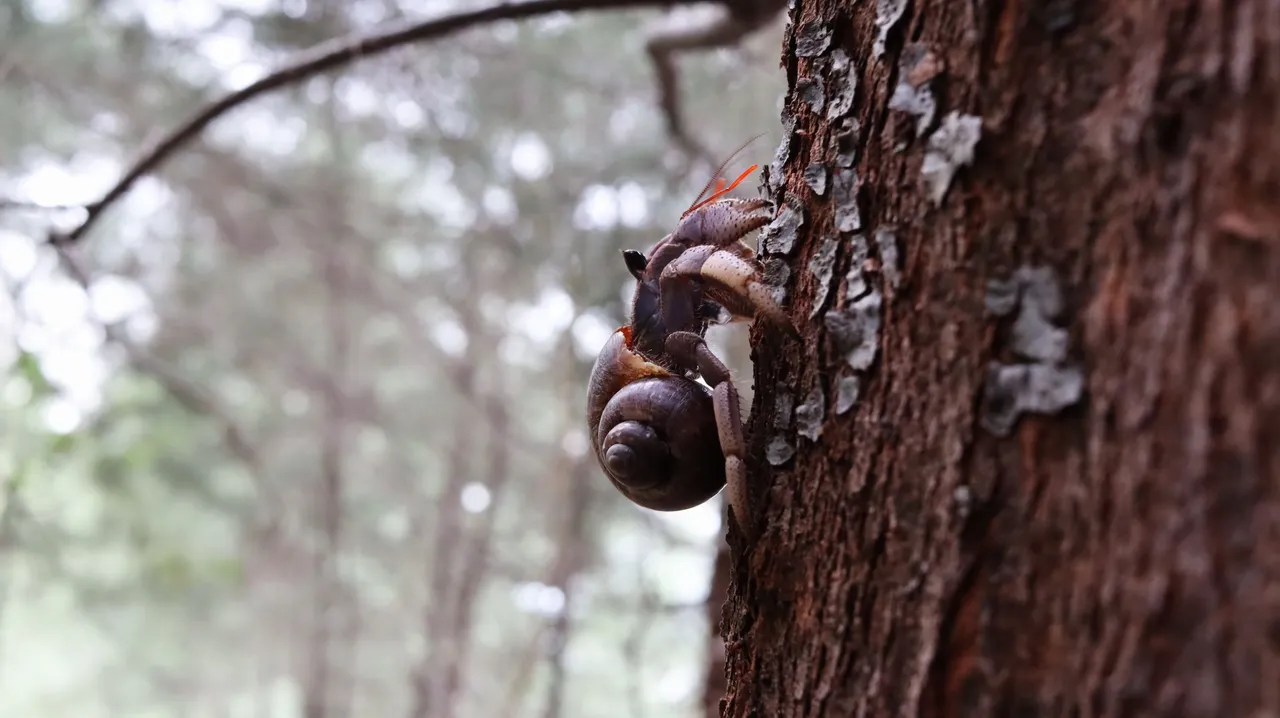
Our location is in the northwest of Aceh (Sumatra) in Indonesia, west of the city of Banda Aceh. Although it is located on the outskirts of Banda Aceh, access to this location must be passed by walking for about 1.5 km. That was because the location was cut off from the outskirts of the city by a fast-flowing river mouth. It is actually also a coastal land surrounded by water; in front of it is the sea, while on the other side are river mouths and lagoons. So, the land is almost like an island, and is a secluded beach, rarely visited other than by a few fishermen and anglers. Because it is a secluded beach, I was motivated to visit there, to see how things really are there. The land as seen from above in this image I took from the Google Eart Pro, is a land overgrown with pine trees. Things were calm there, and it was as if it was just overgrown with a pine forest.
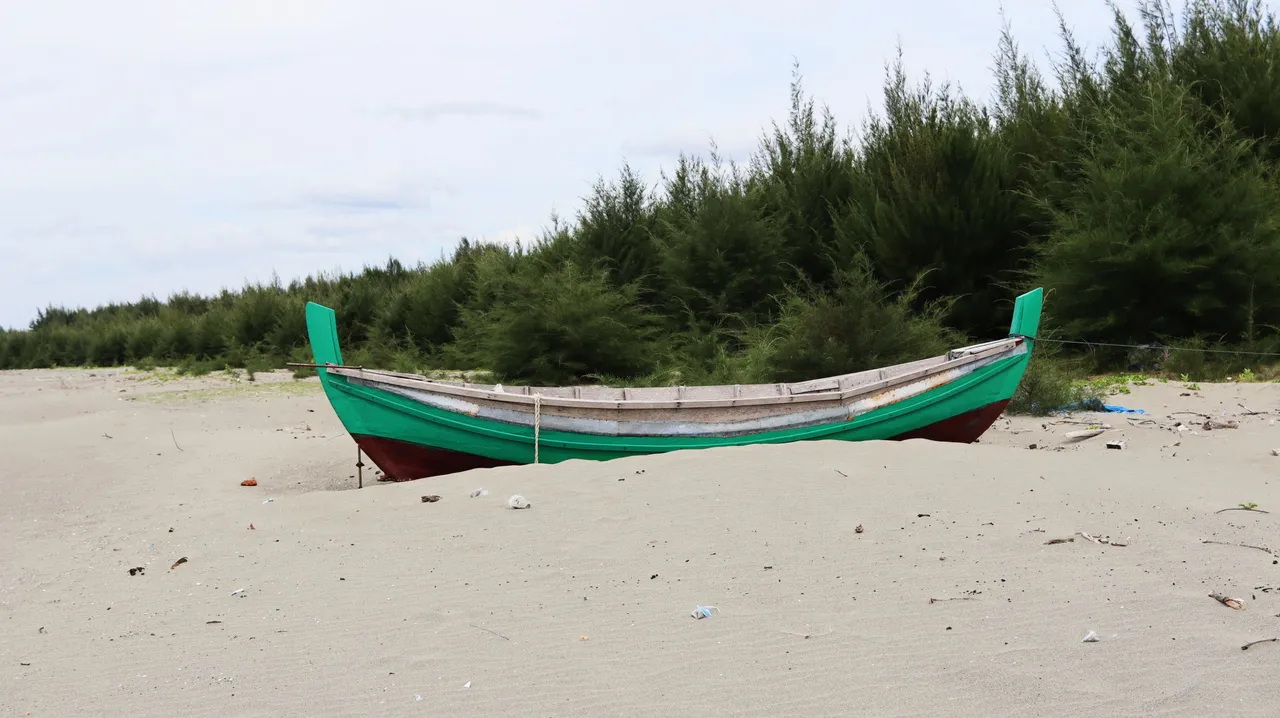
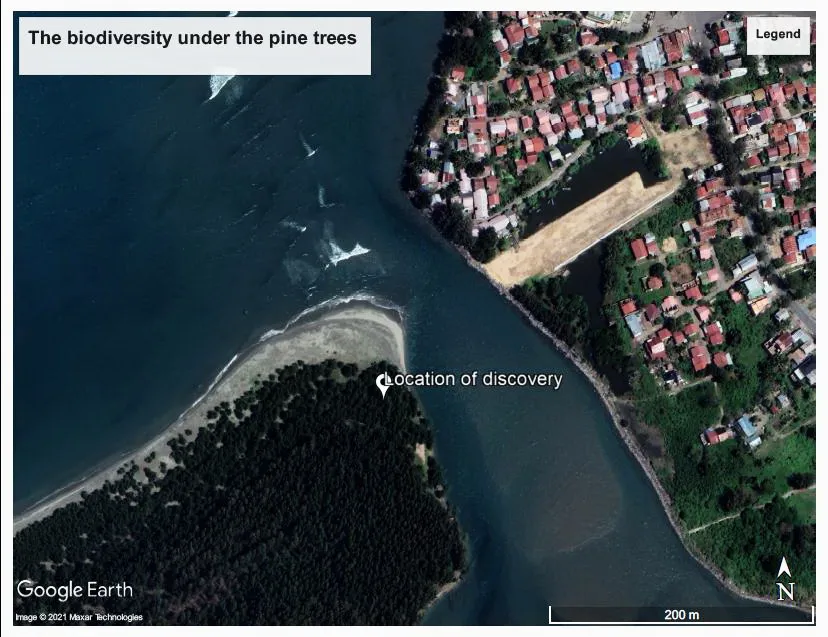
The location is at latitude 5°33'11.37"N and longitude 95°16'56.60"E.
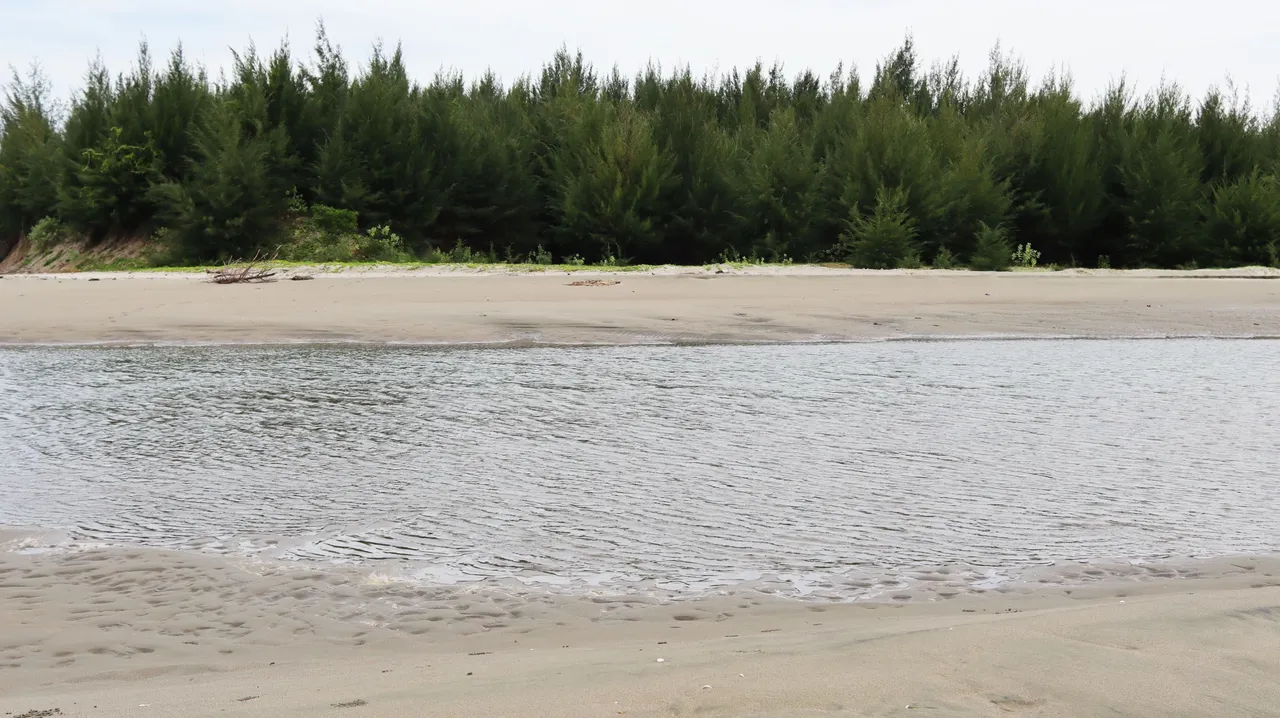
After passing along the coast I came to the edge of the estuary. It is known as "Kuala Cangkoi", and the beach is called "Kuala Cangkoi" beach (Cangkoi: hoe, due to the shape of the landscape which is assumed to resemble a hoe).

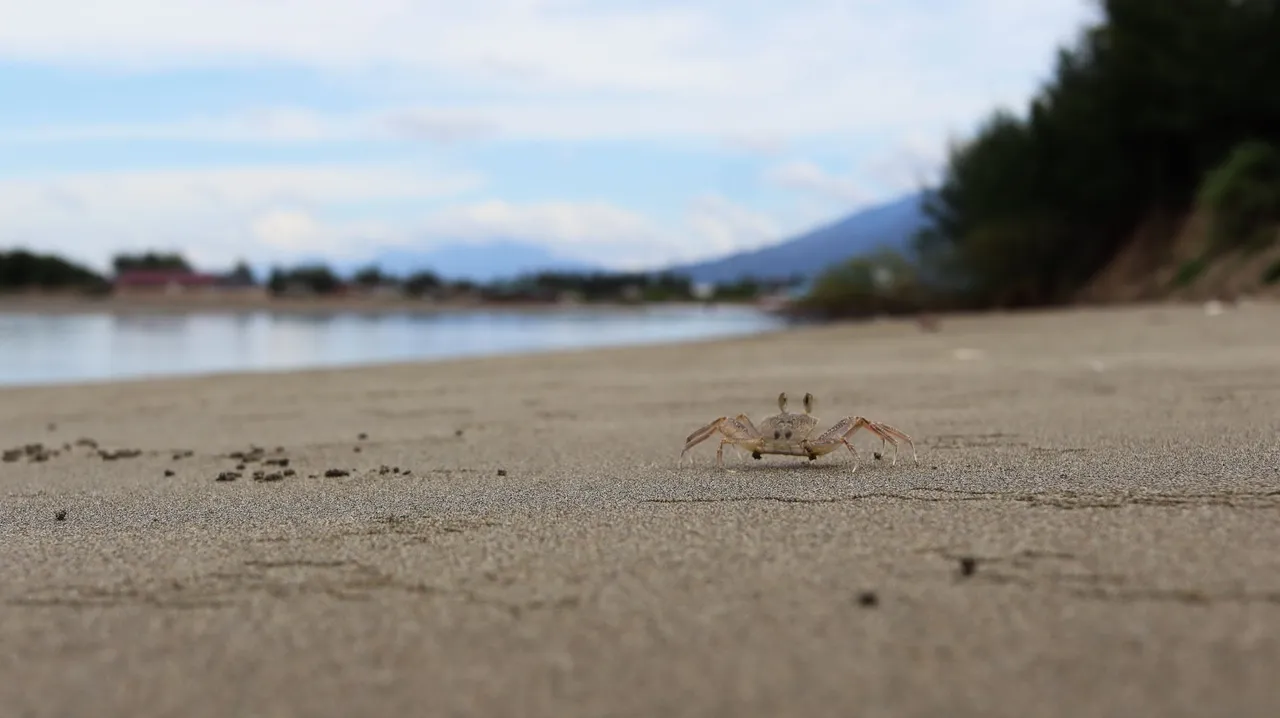
Near the estuary, a small hill stood out amidst the surrounding plains. I wondered what was on that little hill, and without waiting any longer I went there.
Brown marmorated stink bug (Halyomorpha halys)
At first I thought I found nothing here but pine branches close to the ground. It would only make it difficult for me to move under the trees. After going up the hill, I stood up and tried to look up at the ground because surely, I thought, upwards, there was nothing but pine needles and their dense branches.
In that moment, suddenly something seemed to be thrown and caught in the pine leaves. I tried checking it out, and it turned out to be a stink bug or rather, a Brown marmorated stink bug (Halyomorpha halys) in the family Pentatomidae. What a strange way of flying and perching, I thought! If it's called "marmorated" it's because the texture looks multicolored and veined like marble. It is a pest that sucks the host plant with its proboscis for feed. It emits a pungent odor through a hole in its abdomen as a defense mechanism to deter predators. (source)
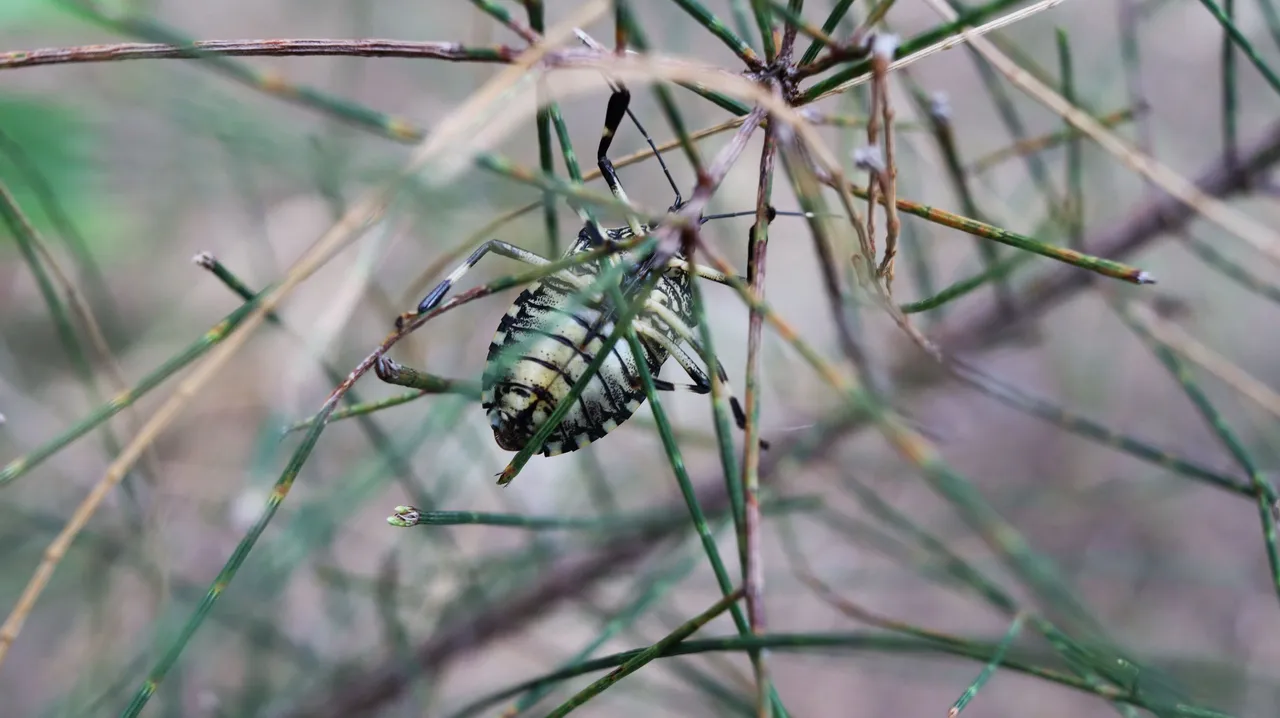
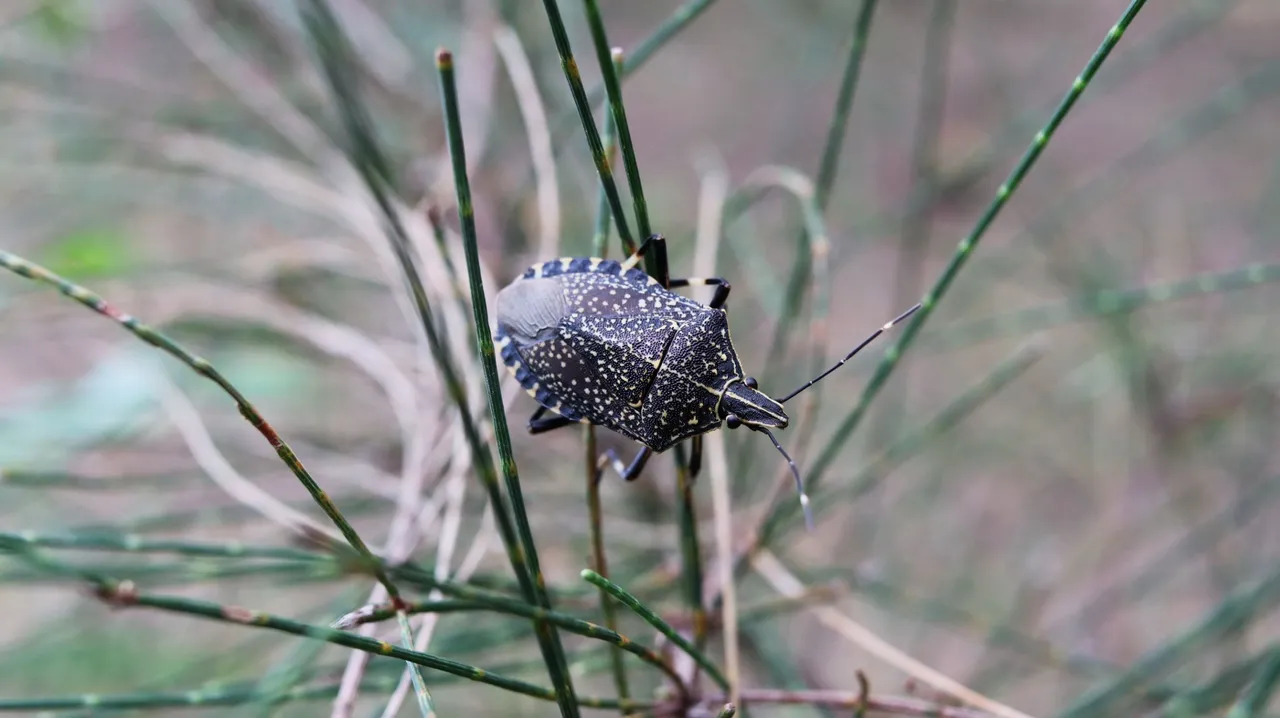
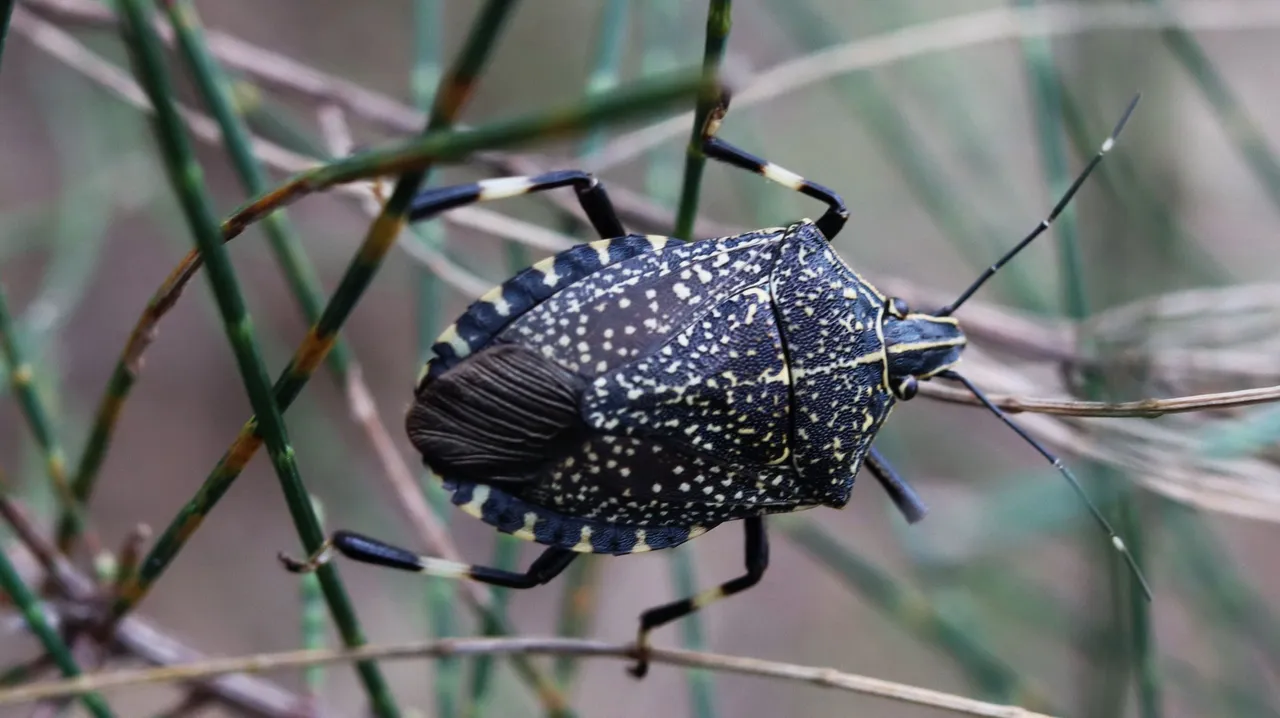
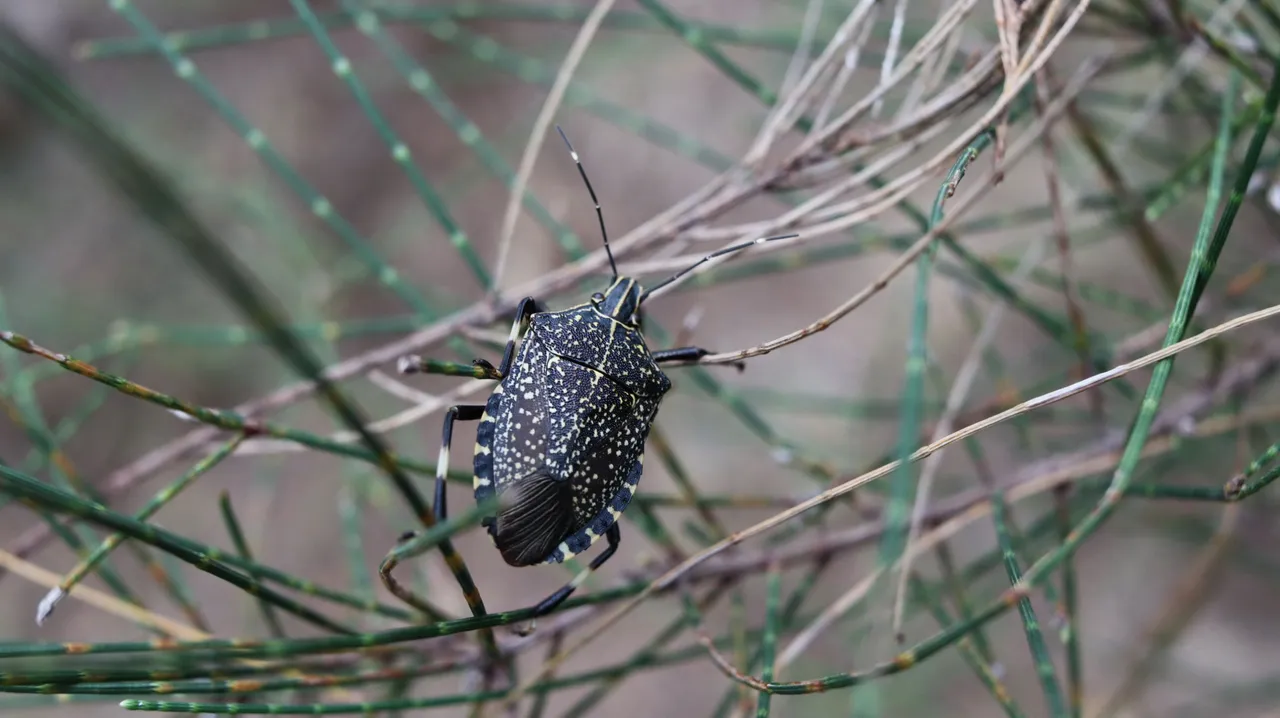
Puffball fungi
That first discovery turned out to be only the beginning of what was later revealed there, under those pine trees. When I took pictures of the stink bug, my eyes caught something above the ground. It appeared among the old pine leaves like small, brightly colored balloons. They are Puffball fungi. Puffballs do not have an open cap and gills that contain spores. Puffball produces spores internally, inside the ball. The spores are expelled after the fungus dries and the ball bursts. Those I found here seem to be vascellum sp.; Vascellum is a genus in the family Agaricaceae. They make me smile, because they have made my trip worth it. (source)
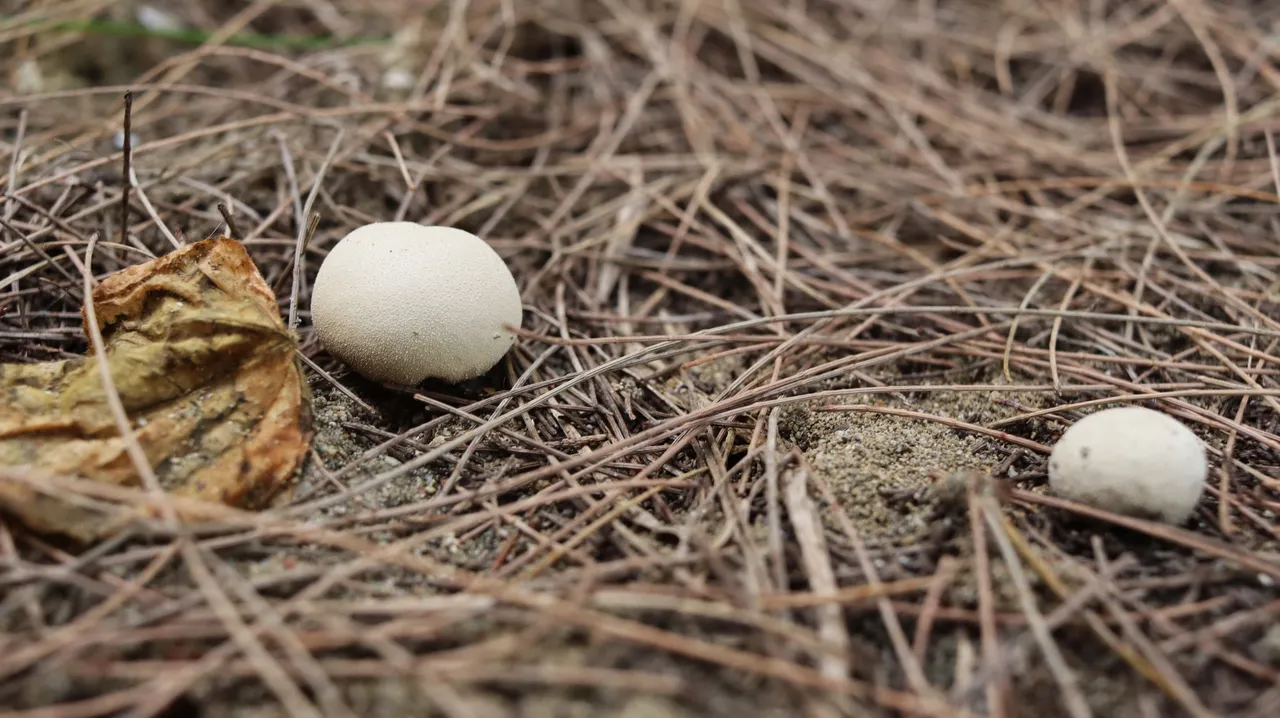
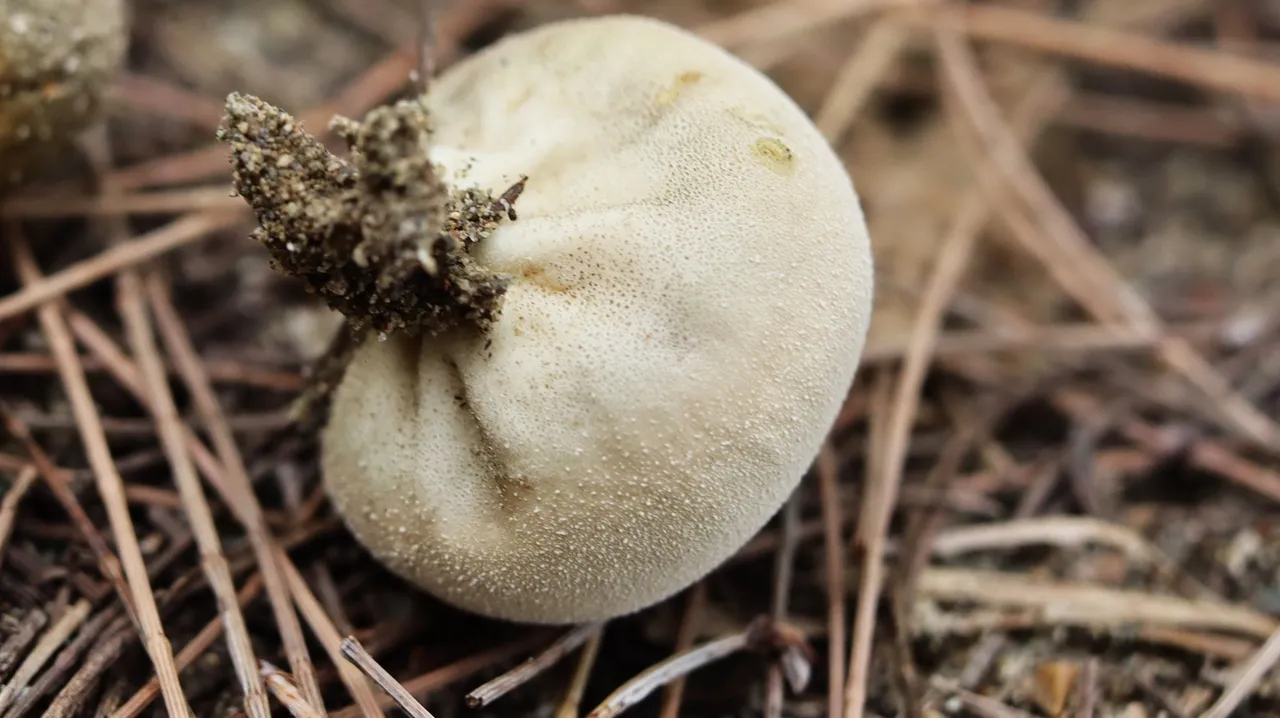
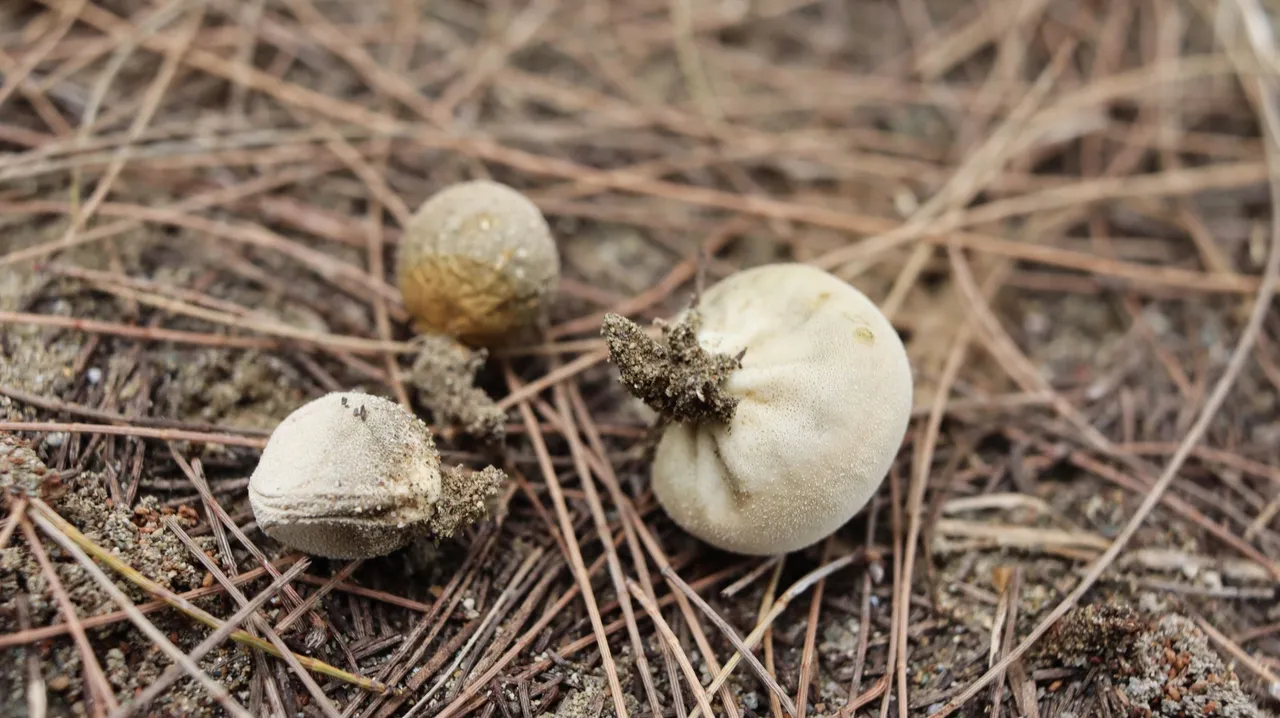
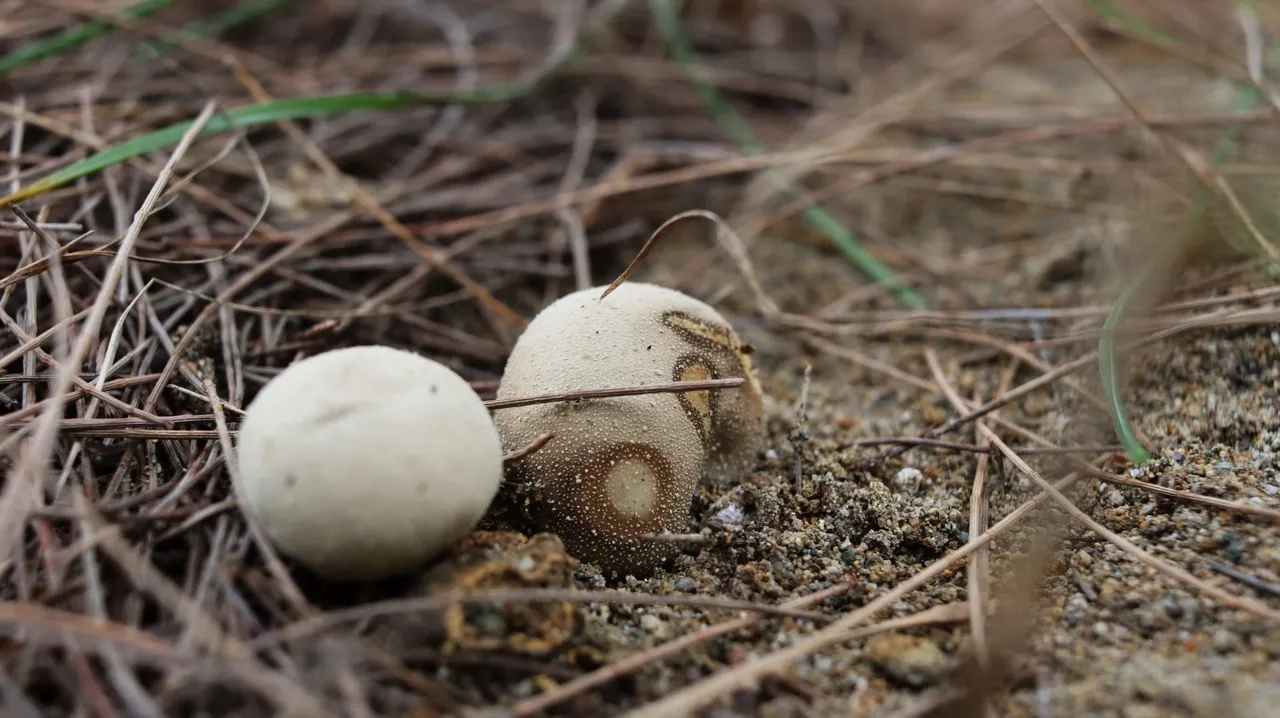

Ivy Gourd
Actually, not many types of plants that can grow in this pine forest environment. But, I saw these trunks creeping over the ground, then climbing the pine trees, even to the tops of the trees, bringing out their fruit. Ivy gourd or Coccinia grandis is a tropical climbing plant. The red and fresh fruits seem to provide some variety to this otherwise monotonous environment. It creeps and climbs at this location, and its cucumber-like fruits can be eaten as a vegetable. It is said, the fruits were also used in traditional medicine. (source)
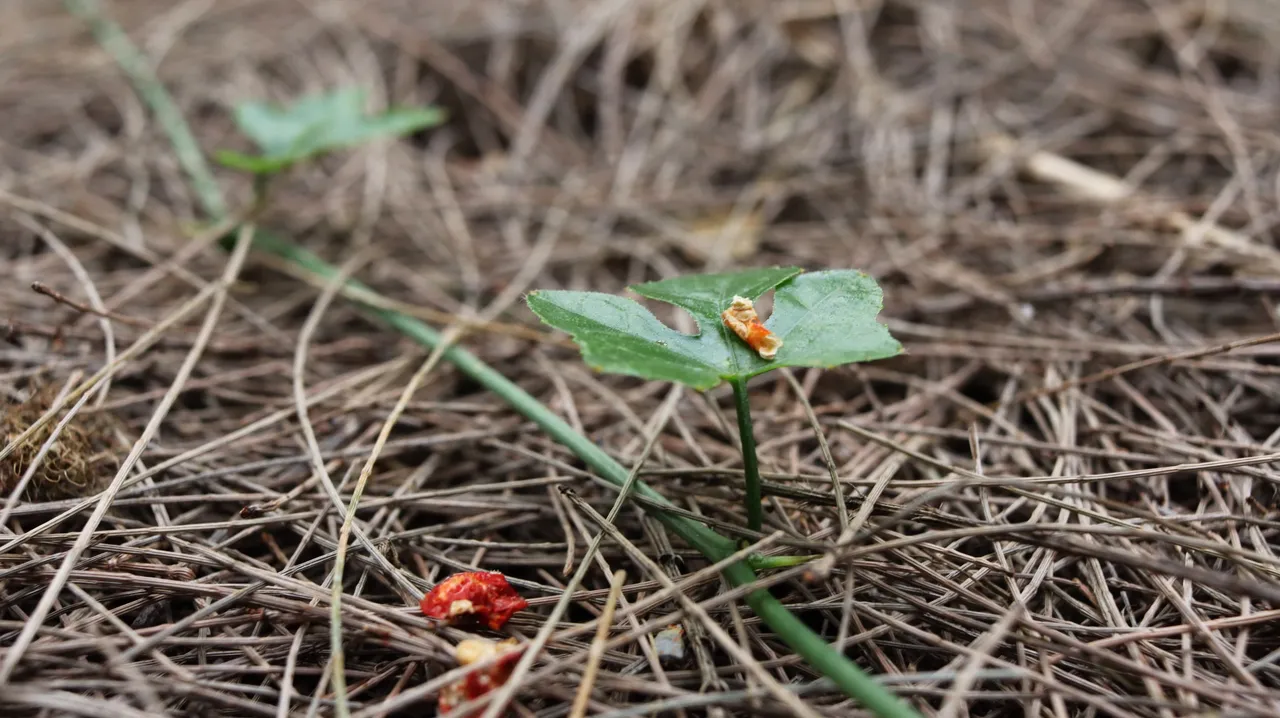
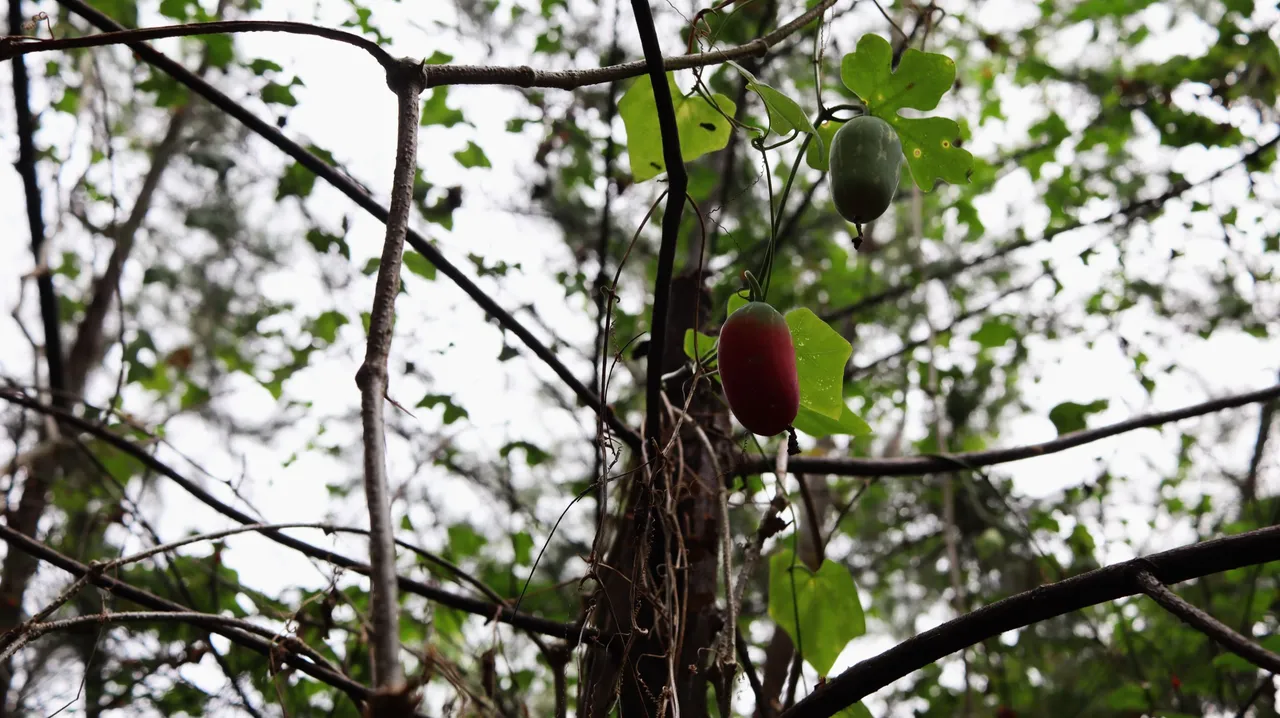
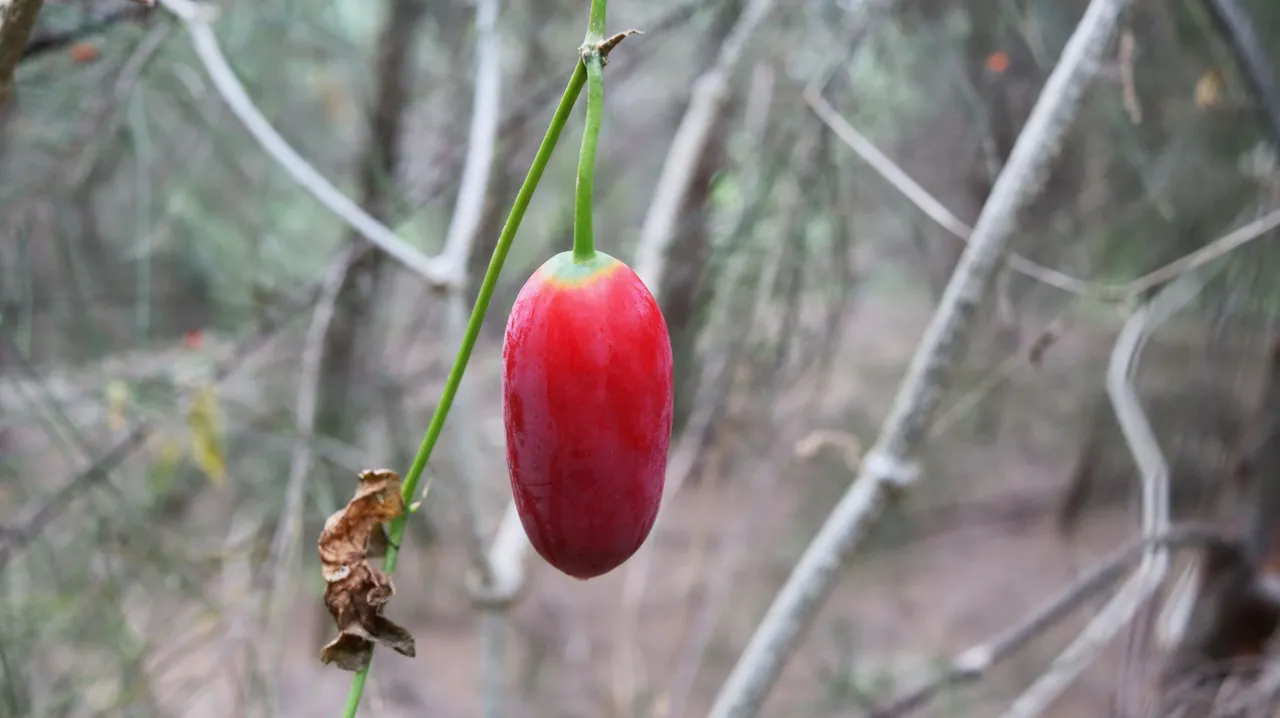
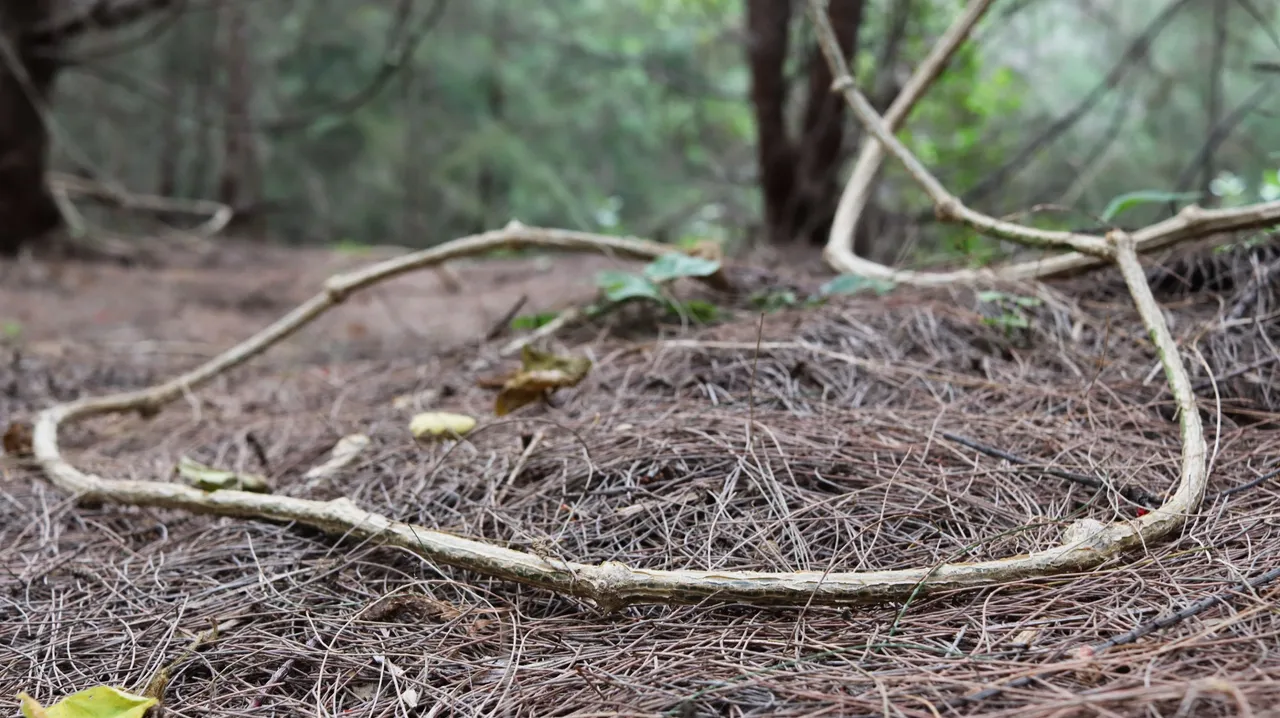
The "Hermit" who climbed
Still in the same location, and as I followed and watched the Ivy gourd stems creep over the ground, I came to where two Hermit crabs were sitting. I wouldn't be surprised if they were a bit far from the beach sand. They are a terrestrial species in the tropics. Things like that are often found.
When I approached, as usual, they immediately pulled their bodies into "illegal" shells (Sorry, because they don't have shells of their own, and have adapted to occupy empty gastropod shells). I thought they were Coenobita variabilis in the family Coenobitidae.(source)
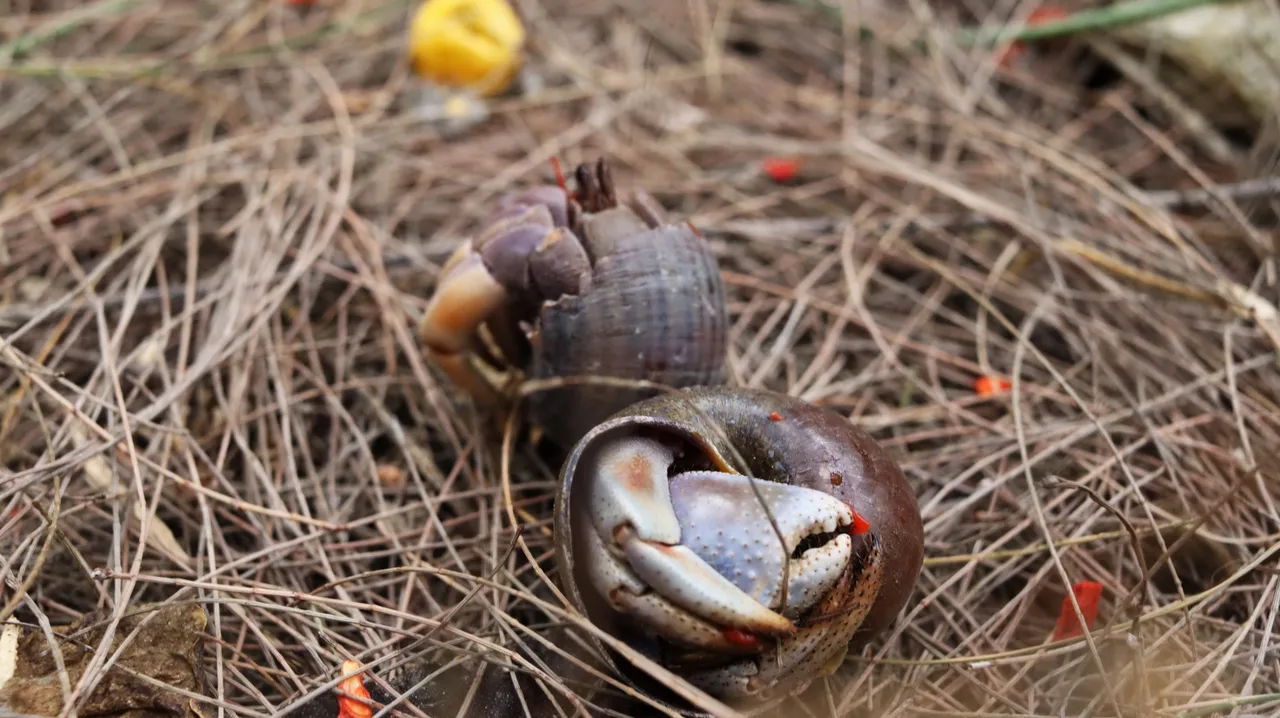
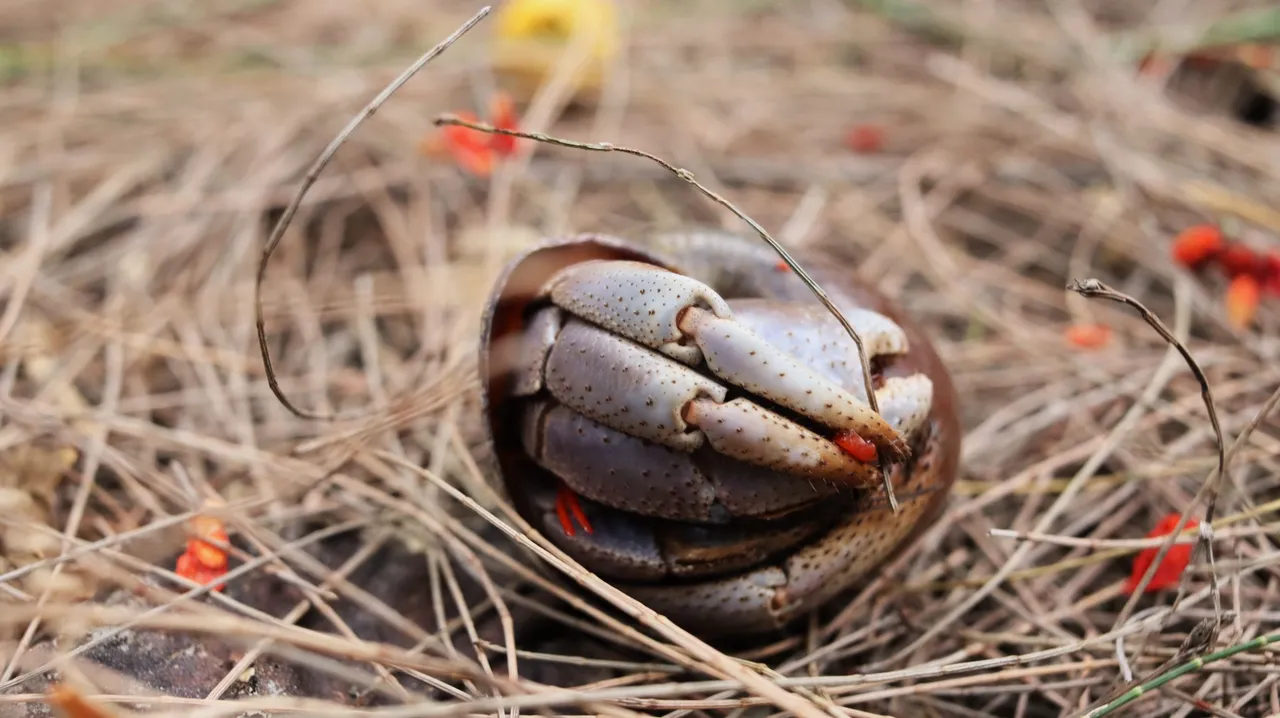
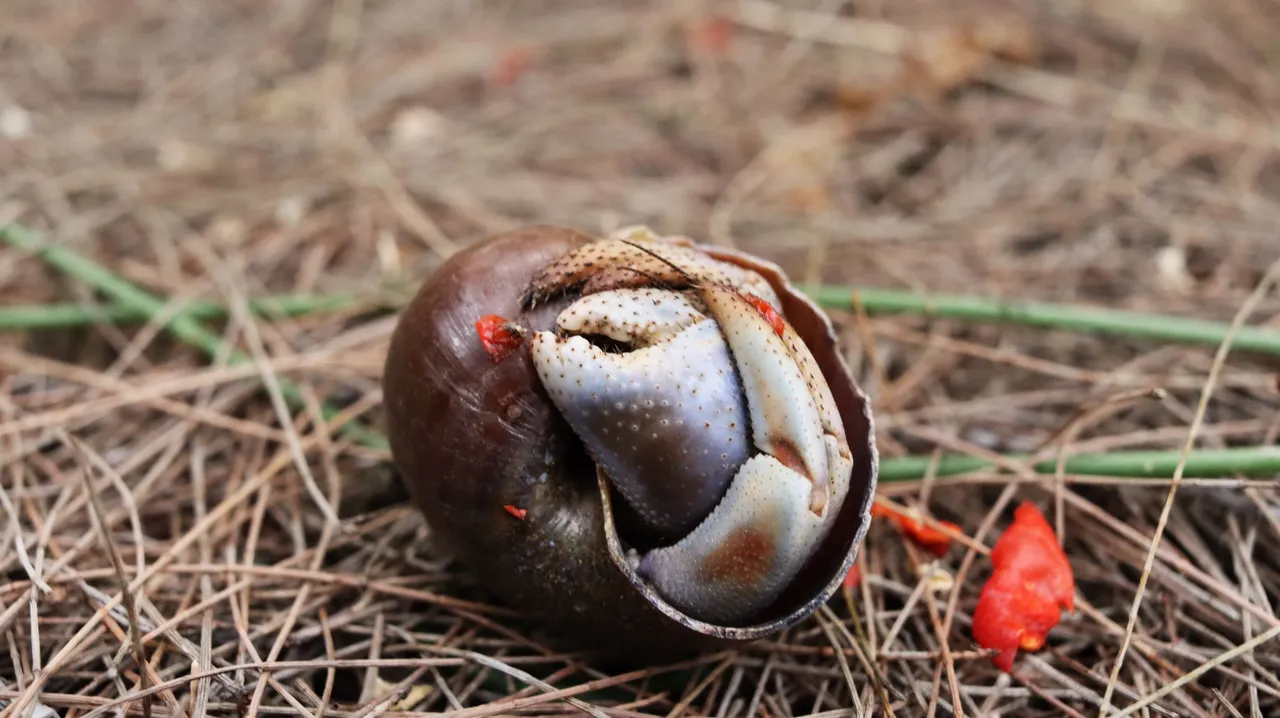
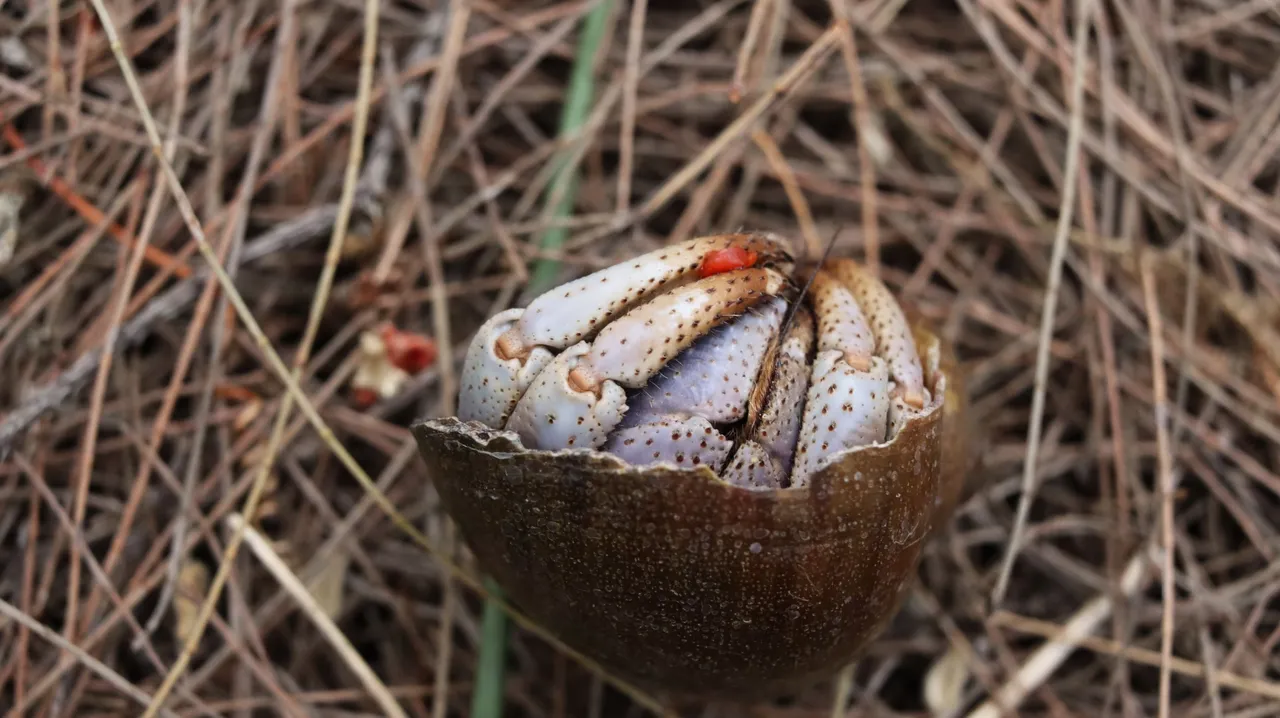
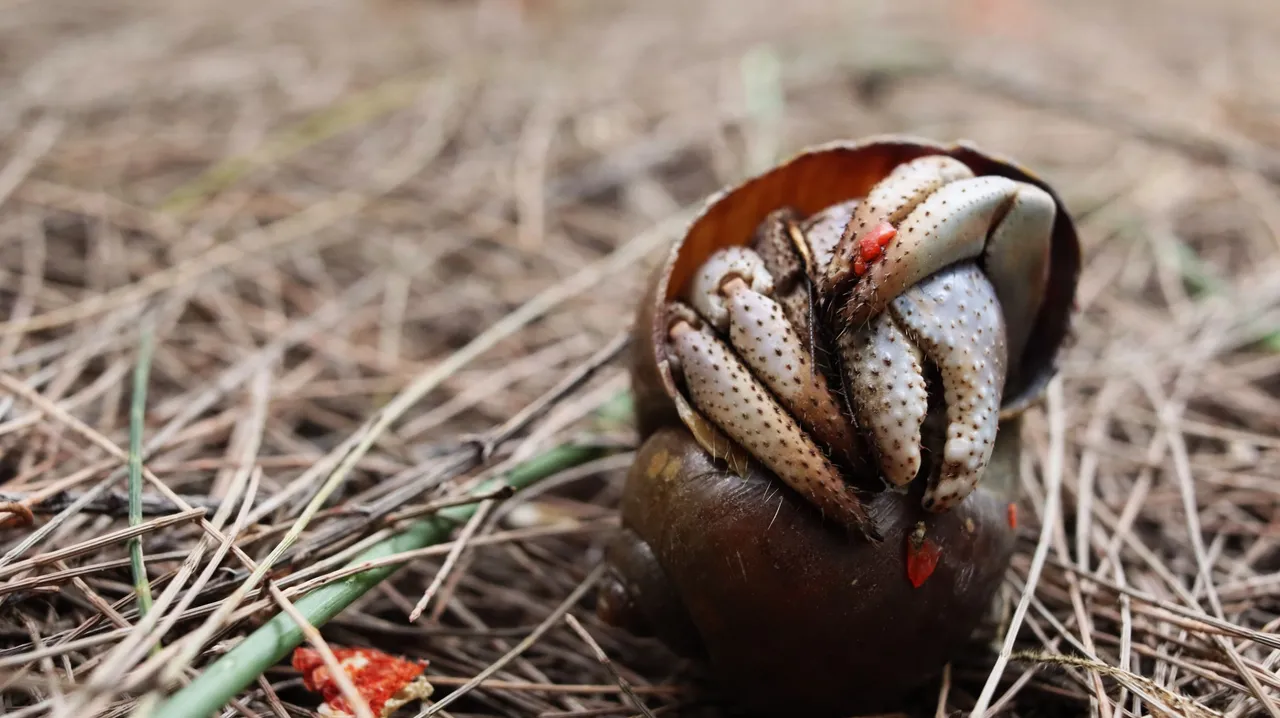
They pull their bodies into the large shells of land snails and cover the shell openings with their claws. I waited for them to emerge from the shells. While one of them stayed in its shell, the other one immediately came out.. and tried to escape.. I caught the runaway, it reacted by inserting itself into the shell, and a moment later, it tried to run away again. A few times it repeated, until later, I let it escape... and as it turned out, it went climbing a tree.
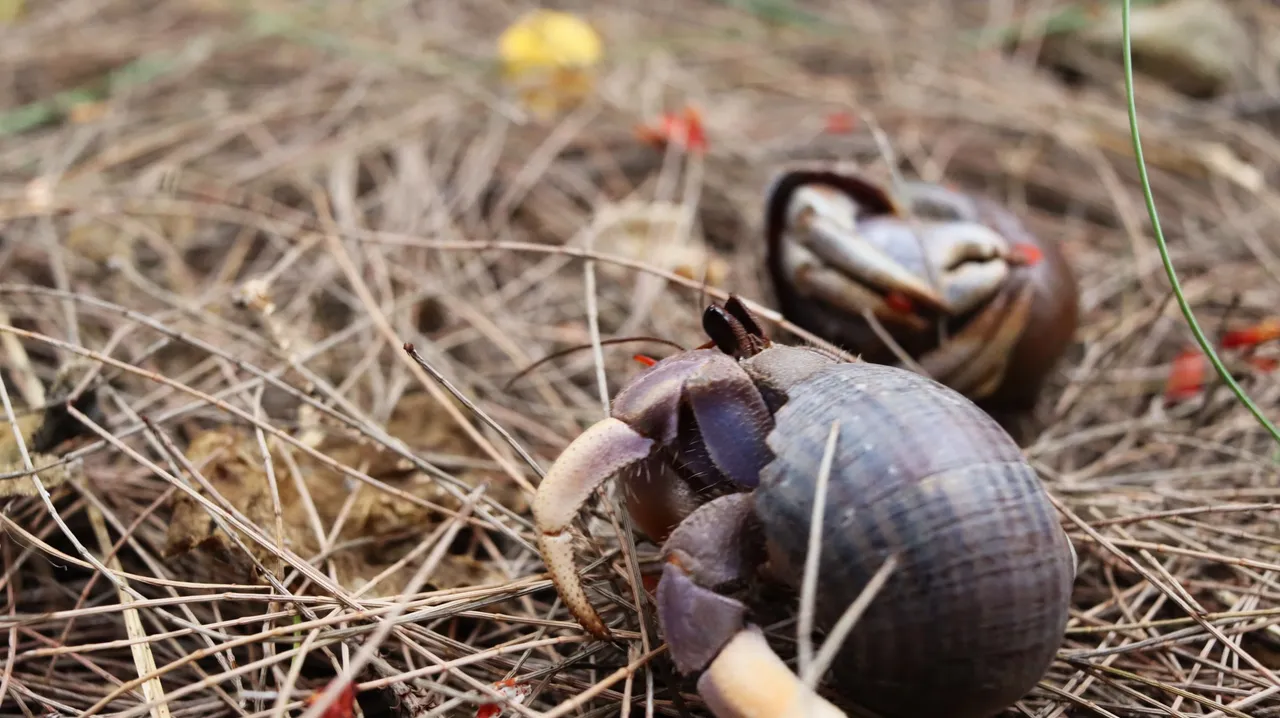
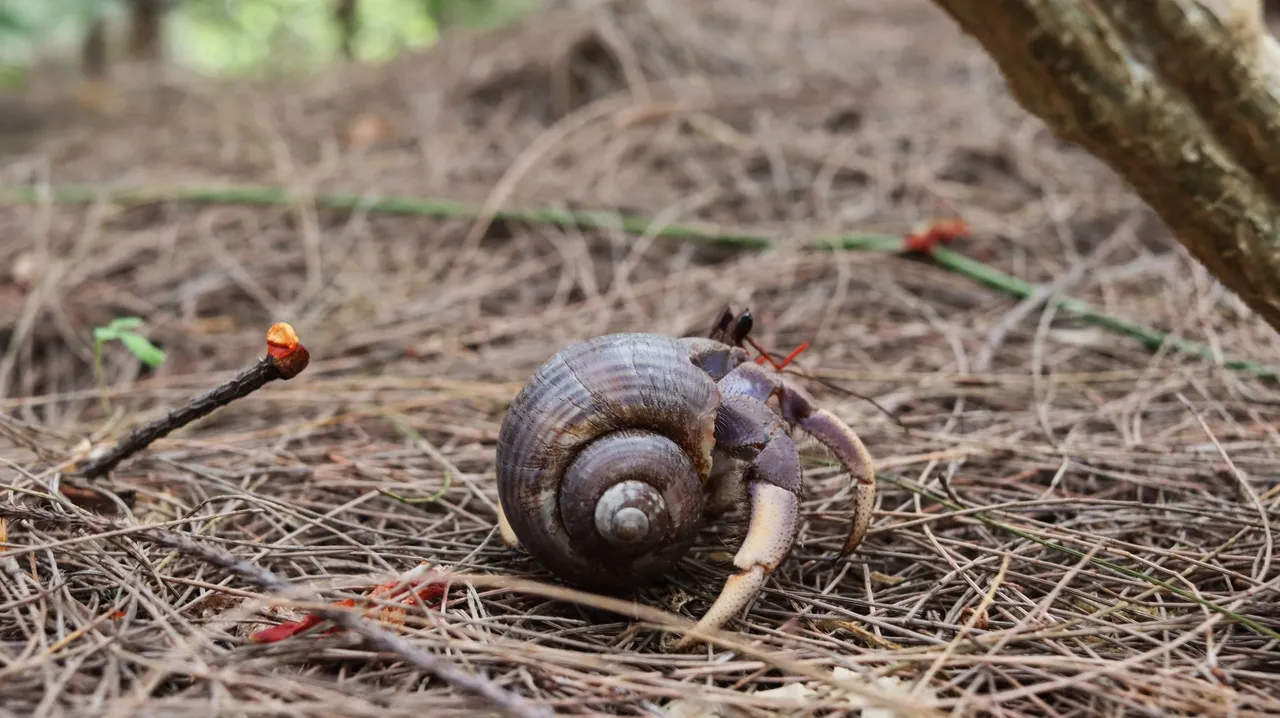
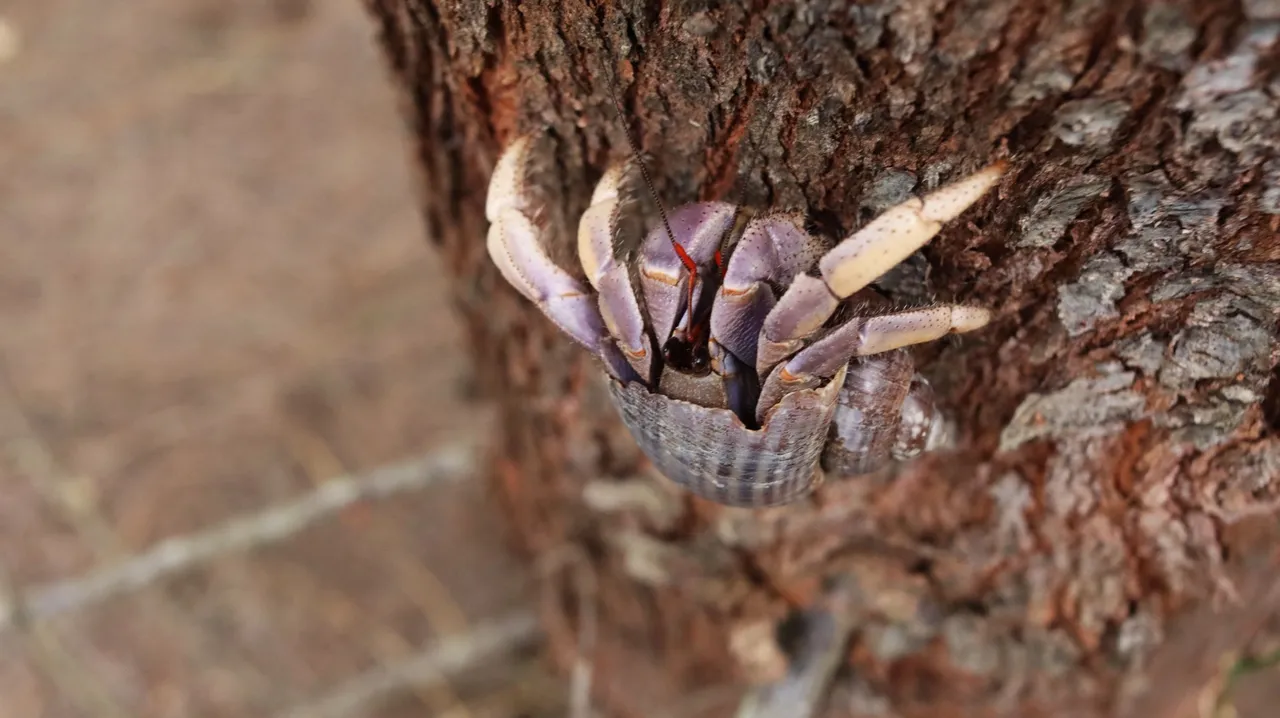
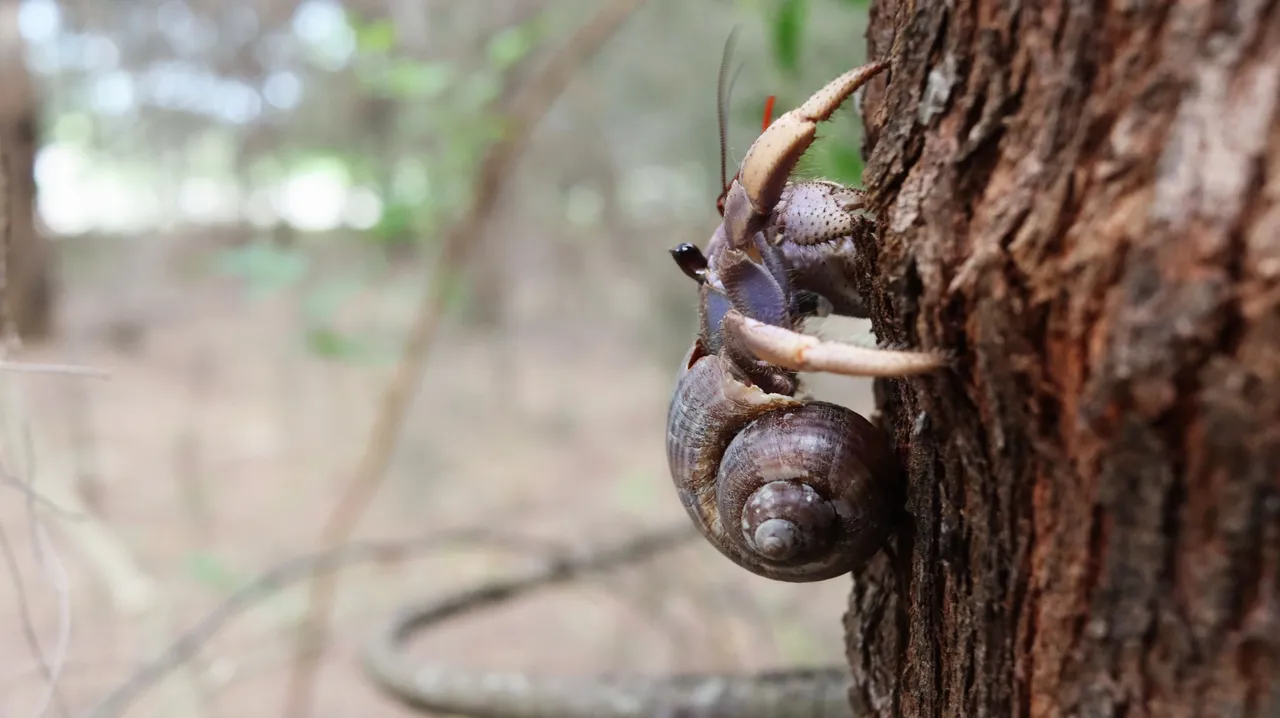
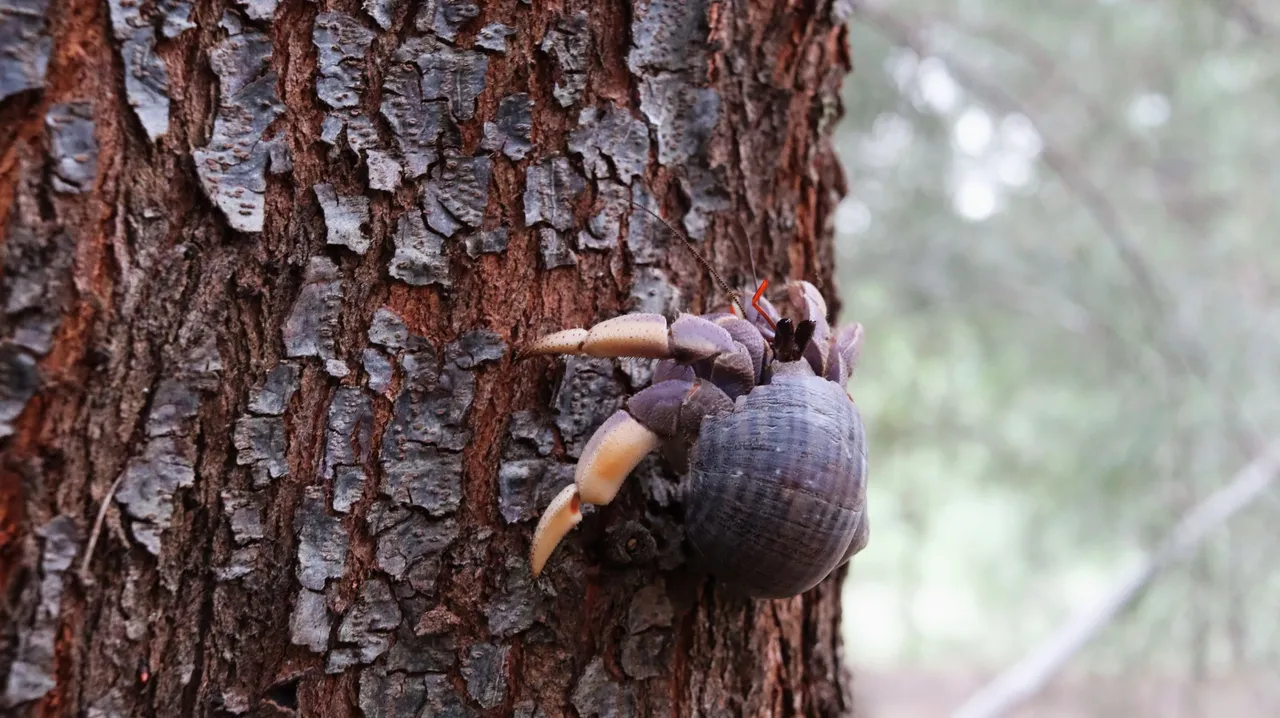
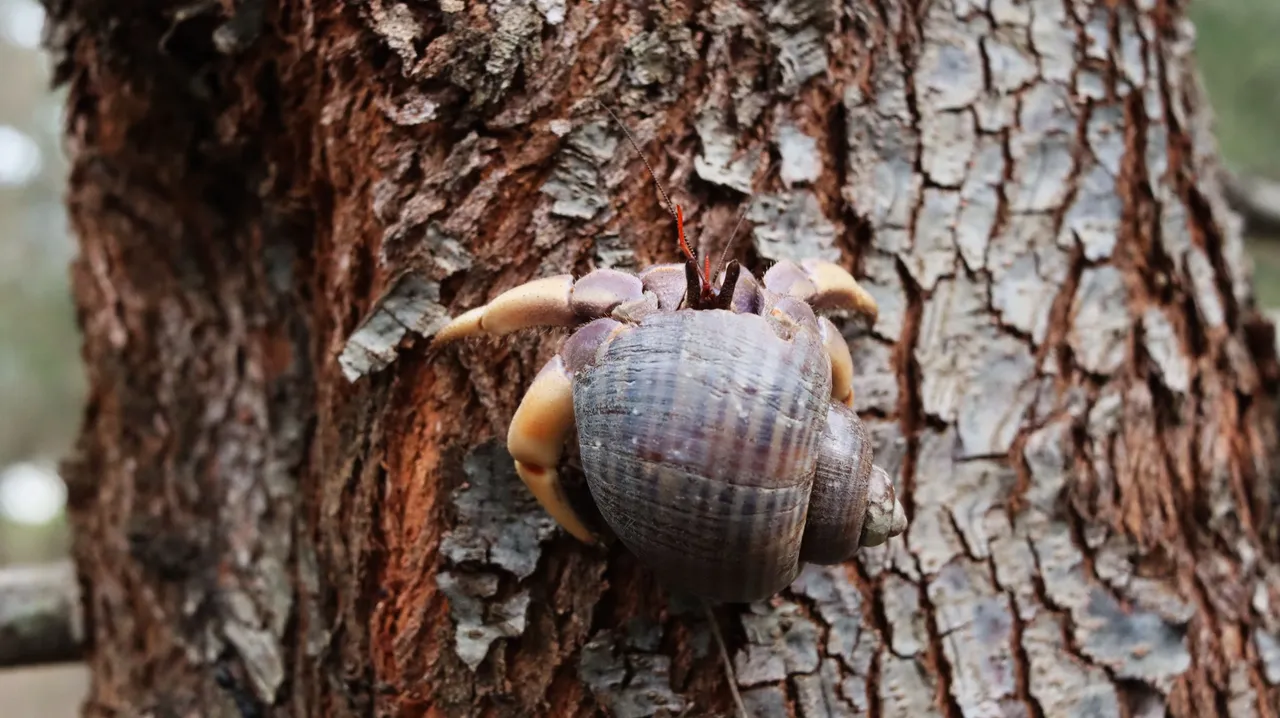
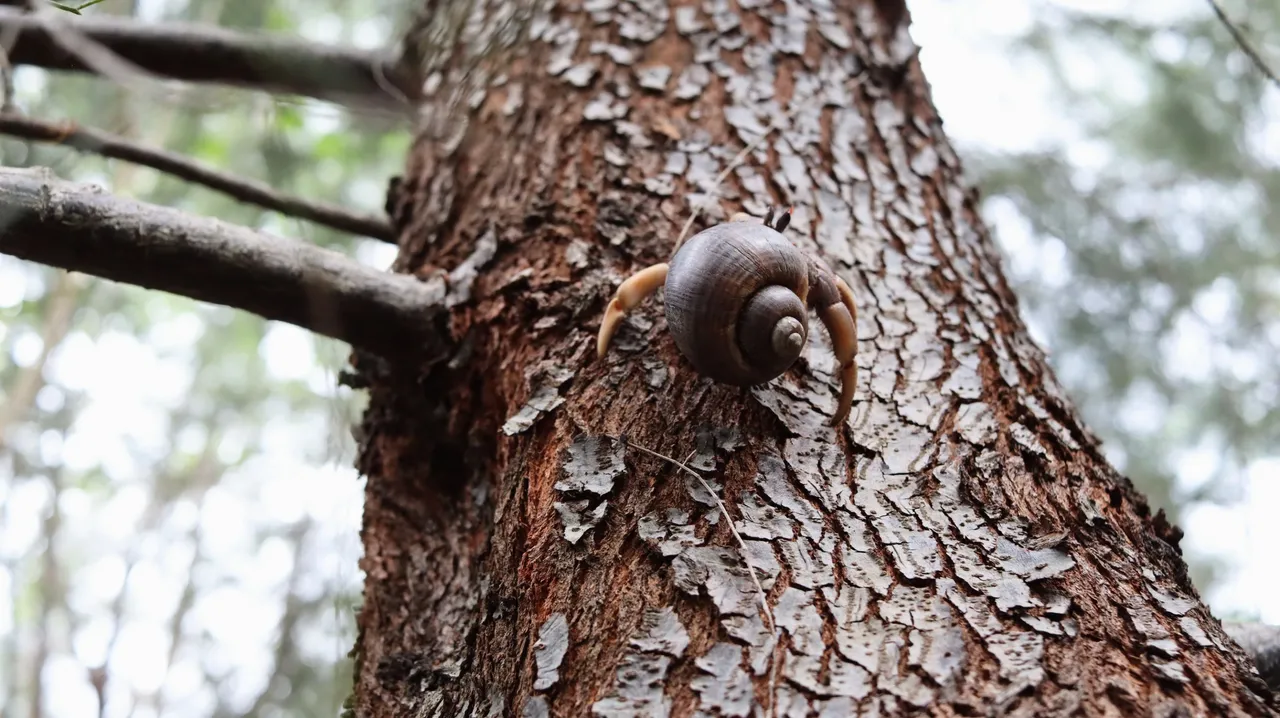
The Hermit Crab climbs, that's not that strange to me, but it climbs up the pine tree to quite a height, that's the first I've seen. That's an awesome and amazing thing for me!
So that's among the biodiversity that we can find under the pine trees there. A biodiversity that can be found even in an area that is only a few tens of meters wide.
